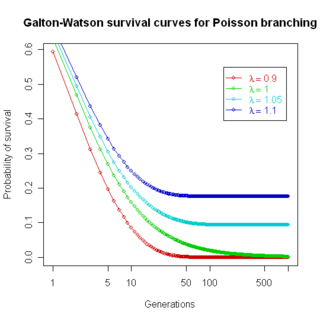
Anthropology is the scientific study of humanity, concerned with human behavior, human biology, and societies, in both the present and past, including past human species. Social anthropology studies patterns of behaviour, while cultural anthropology studies cultural meaning, including norms and values. Linguistic anthropology studies how language influences social life. Biological or physical anthropology studies the biological development of humans. Visual anthropology, which is usually considered to be a part of social anthropology, can mean both ethnographic film as well as the study of "visuals", including art, visual images, cinema etc. Oxford Bibliographies describes visual anthropology as "the anthropological study of the visual and the visual study of the anthropological".

Ethnography is a branch of anthropology and the systematic study of individual cultures. Ethnography explores cultural phenomena from the point of view of the subject of the study. Ethnography is also a type of social research involving the examination of the behaviour of the participants in a given social situation and understanding the group members' own interpretation of such behaviour.
An anthropologist is a person engaged in the practice of anthropology. Anthropology is the study of aspects of humans within past and present societies. Social anthropology, cultural anthropology and philosophical anthropology study the norms and values of societies. Linguistic anthropology studies how language affects social life, while economic anthropology studies human economic behavior. Biological (physical), forensic and medical anthropology study the biological development of humans, the application of biological anthropology in a legal setting and the study of diseases and their impacts on humans over time, respectively.

The Galton–Watson process is a branching stochastic process arising from Francis Galton's statistical investigation of the extinction of family names. The process models family names as patrilineal, while offspring are randomly either male or female, and names become extinct if the family name line dies out. This is an accurate description of Y chromosome transmission in genetics, and the model is thus useful for understanding human Y-chromosome DNA haplogroups. Likewise, since mitochondria are inherited only on the maternal line, the same mathematical formulation describes transmission of mitochondria. The formula is of limited usefulness in understanding actual family name distributions, since in practice family names change for many other reasons, and dying out of name line is only one factor.
The Anthropological Society of London was founded in 1863 by Richard Francis Burton and Dr. James Hunt. It broke away from the existing Ethnological Society of London, founded in 1843, and defined itself in opposition to the older society. The Anthropological Society, Hunt proclaimed, would concern itself with the collection of facts and the identification of natural laws that explained the diversity of humankind. It would also cast its intellectual nets more broadly, dealing with the physical as well as the cultural aspects of humans.

John Reed Swanton was an American anthropologist, folklorist, and linguist who worked with Native American peoples throughout the United States. Swanton achieved recognition in the fields of ethnology and ethnohistory. He is particularly noted for his work with indigenous peoples of the Southeast and Pacific Northwest.

The Royal Anthropological Institute of Great Britain and Ireland (RAI) is a long-established anthropological organisation, with a global membership. Its remit includes all the component fields of anthropology, such as biological anthropology, evolutionary anthropology, social anthropology, cultural anthropology, visual anthropology and medical anthropology, as well as sub-specialisms within these, and interests shared with neighbouring disciplines such as human genetics, archaeology and linguistics. It seeks to combine a tradition of scholarship with services to anthropologists, including students.
The Tataviam are a Native American group in Southern California. Their tribal government is based in San Fernando, CA, and includes the Executive Branch, Legislative Branch, Tribal Senate, and the Council of Elders. The current Tribal President of the Tatavian people is Rudy Ortega Jr.

Ramaprasad Chanda was an Indian anthropologist, historian and archaeologist from Bengal. A pioneer in his field in South Asia, Chanda's lasting legacy is the Varendra Research Museum, he established in Rajshahi, a leading institute for research on the history of Bengal.He was the first head of the Department of Anthropology at the University of Calcutta from 1920- 1921.He was also a professional archaeologist and worked in the Archaeological Survey of India. Chanda was one of the founders the Indian Anthropological Institute and was its president during 1938–1942. He represented India in the first International Congress of Anthropology held in London in 1934.He had done original research on the somatic characters of Indian populations by using ancient Indian literature and challenged H.H.Risley's theory on Indian races.

John Beddoe was one of the most prominent English ethnologists in Victorian Britain.

Ernest Chantre was a prominent French archaeologist and anthropologist.
Mro-Khimi is a Kuki-Chin language of Burma spoken by the Mro-Khimi people.

The California genocide consisted of actions taken by the United States in the 19th century, following the American Conquest of California from Mexico, that resulted in the dramatic decrease of the indigenous population of California. Between 1849 and 1870 it is conservatively estimated that American colonists murdered some 9,500 California Natives, and acts of enslavement, kidnapping, rape, child separation and displacement were widespread, encouraged, carried out by and tolerated by state authorities and militias.
The Barungguan are an Aboriginal Australian people of the Cape York Peninsula of Northern Queensland. The name is associated with three languages: Ganganda, Umpithamu and Morrobolam.
The Gunggari, or Kunggari, are an Aboriginal Australian people of southern Queensland. They are to be distinguished from the Kuungkari.
The Baruŋgam are an Aboriginal Australian people of Southeast Queensland.
The Kambuwal were an indigenous Australian people of the state of Queensland.
The Kokowara were an indigenous Australian people of the state of Queensland.
The Nguri were an indigenous Australian people of the state of Queensland.
The Kula, also known as the Kurnu, were an indigenous Australian people of the state of New South Wales.